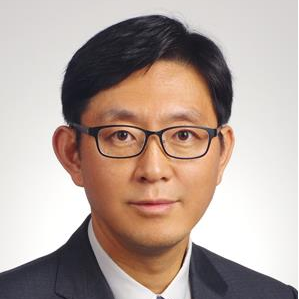Energy Policy in South Korea
A special issue of Energies (ISSN 1996-1073). This special issue belongs to the section "C: Energy Economics and Policy".
Deadline for manuscript submissions: closed (31 March 2019) | Viewed by 54205
Special Issue Editor
Interests: energy policy; energy economics; energy pricing; energy demand forecasting; energy taxation; cost-benefit analysis of energy projects; non-market energy goods valuation; input-output analysis of energy issues
Special Issues, Collections and Topics in MDPI journals
Special Issue Information
Dear Colleagues,
Korea is the world’s eighth largest energy-consuming country, but its dependence on energy imports is 94.7%, making it an important task to secure stable energy. Therefore, as a country with limited energy reserves, setting up and implementing the nation’s energy policy became a crucial task for its survival. Meanwhile, the rate of increase in greenhouse gas emissions is the second highest among OECD countries. As of 2017, coal power generation accounted for 43%, raising the issue of reducing greenhouse gases and ultrafine dust emissions. Moreover, as of 2017, the share of nuclear power generation is about 30%, while renewable energy is only 7%.
Thus, the Moon Jae-In government, newly launched in 2017, is pursuing the energy transition, which means a reduction in nuclear power and coal-fired generation, and an expansion in renewable energies. In particular, the government is strongly implementing the so-called 3020 plan to increase the share of renewable energy generation to 20% by 2030. Many people seem to be in favor of the energy transition even though the energy transition creates a certain amount of financial burden.
However, conflicts still arise, with some intellectuals and media seriously criticizing the problem of reducing nuclear power plants and expanding renewable energy. If you look at the industrial structure of the energy supply sector, there are some cases where public and private companies compete against each other, such as the power generation sector, and a public enterprise is exclusively engaged in the power sales sector. Therefore, the restructuring of the energy industry structure has also emerged as an important topic. I hope that these various issues will be discussed in this Special Issue.
I am writing to invite you to submit your original work in energy policy in South Korea to this Special Issue. As the Guest Editor of this Energies Special Issue on “Energy Policy in South Korea”, I am delighted to extend this invitation to you and I am looking forward to receiving your outstanding contributions.
Prof. Dr. Seung-Hoon Yoo
Guest Editor
Manuscript Submission Information
Manuscripts should be submitted online at www.mdpi.com by registering and logging in to this website. Once you are registered, click here to go to the submission form. Manuscripts can be submitted until the deadline. All submissions that pass pre-check are peer-reviewed. Accepted papers will be published continuously in the journal (as soon as accepted) and will be listed together on the special issue website. Research articles, review articles as well as short communications are invited. For planned papers, a title and short abstract (about 100 words) can be sent to the Editorial Office for announcement on this website.
Submitted manuscripts should not have been published previously, nor be under consideration for publication elsewhere (except conference proceedings papers). All manuscripts are thoroughly refereed through a single-blind peer-review process. A guide for authors and other relevant information for submission of manuscripts is available on the Instructions for Authors page. Energies is an international peer-reviewed open access semimonthly journal published by MDPI.
Please visit the Instructions for Authors page before submitting a manuscript. The Article Processing Charge (APC) for publication in this open access journal is 2600 CHF (Swiss Francs). Submitted papers should be well formatted and use good English. Authors may use MDPI's English editing service prior to publication or during author revisions.
Keywords
- Energy economics and policy
- Energy planning
- Energy transition
- Energy pricing
- Energy security
- Energy conservation
- Energy welfare and justice
- Energy R&D management and policy
- Energy project evaluation
- Energy governance
- Energy industry
- Renewable energies
- Electricity
- Natural gas
- Coal
- Nuclear energy
- Oil and petroleum products
- Hydrogen energy
- Bioenergy
- Marine energy





